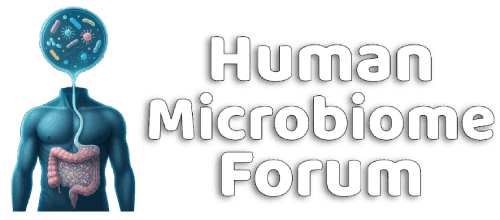Michael Harrop
Well-known member
https://www.foundmyfitness.com/episodes/microplastics/
View: https://www.youtube.com/watch?v=HTzw_grLzjw
CHAPTERS:
00:00:00 The extent of the problem
00:02:12 Top sources of exposure
00:04:00 Contamination of our water
00:05:04 BPA, phthalates, & PFAS (forever chemicals)
00:07:07 How heating plastic affects BPA exposure
00:09:22 Our unfortunate habit of eating credit cards
00:11:33 Microplastics in major organs
00:14:04 Crossing the blood-brain barrier
00:15:00 How microplastics affect a developing fetus
00:15:54 The bloodstream is a highway for microplastics
00:18:11 Endocrine and hormonal effects
00:23:08 Consequences in pregnant women
00:25:34 How phthalates affect reproductive health
00:26:35 BPA's involvement in autism spectrum disorder
00:29:57 Side effects of prenatal BPA exposure
00:32:17 The brain may be a super-accumulator of plastic
00:34:50 Human brain microplastic levels are rising
00:36:06 Lost fertility in women
00:38:07 Changes in sperm quality
00:39:23 Microplastics in sperm
00:40:59 Why the heart suffers
00:42:51 Microplastics in arterial plaque
00:43:56 How BPA affects blood pressure
00:45:58 Risk of cancer
00:50:31 Topo Chico sparkling water
00:53:02 Reverse osmosis filtration
00:54:56 Food-based strategies for limiting microplastics
00:56:30 The "myth" of BPA-free plastics
00:58:14 Is salt a source of microplastics?
00:59:18 HEPA filters
01:00:52 Choose your clothing wisely
01:01:47 How to prevent release of microplastics (from laundry)
01:02:32 Receipts and thermal paper
01:04:17 Microplastic excretion and breakdown
01:06:28 Sulforaphane for detoxifying
01:08:38 Can dietary fiber increase microplastic excretion?
01:10:15 Are plastic chemicals excreted through sweat?
01:11:22 Do excretion strategies work for "forever chemicals"?
Another shorter clip:
Avoid These Common Sources of Harmful Microplastics
View: https://www.youtube.com/watch?v=Wvjr9kpM9m4
View: https://www.youtube.com/watch?v=HTzw_grLzjw
CHAPTERS:
00:00:00 The extent of the problem
00:02:12 Top sources of exposure
00:04:00 Contamination of our water
00:05:04 BPA, phthalates, & PFAS (forever chemicals)
00:07:07 How heating plastic affects BPA exposure
00:09:22 Our unfortunate habit of eating credit cards
00:11:33 Microplastics in major organs
00:14:04 Crossing the blood-brain barrier
00:15:00 How microplastics affect a developing fetus
00:15:54 The bloodstream is a highway for microplastics
00:18:11 Endocrine and hormonal effects
00:23:08 Consequences in pregnant women
00:25:34 How phthalates affect reproductive health
00:26:35 BPA's involvement in autism spectrum disorder
00:29:57 Side effects of prenatal BPA exposure
00:32:17 The brain may be a super-accumulator of plastic
00:34:50 Human brain microplastic levels are rising
00:36:06 Lost fertility in women
00:38:07 Changes in sperm quality
00:39:23 Microplastics in sperm
00:40:59 Why the heart suffers
00:42:51 Microplastics in arterial plaque
00:43:56 How BPA affects blood pressure
00:45:58 Risk of cancer
00:50:31 Topo Chico sparkling water
00:53:02 Reverse osmosis filtration
00:54:56 Food-based strategies for limiting microplastics
00:56:30 The "myth" of BPA-free plastics
00:58:14 Is salt a source of microplastics?
00:59:18 HEPA filters
01:00:52 Choose your clothing wisely
01:01:47 How to prevent release of microplastics (from laundry)
01:02:32 Receipts and thermal paper
01:04:17 Microplastic excretion and breakdown
01:06:28 Sulforaphane for detoxifying
01:08:38 Can dietary fiber increase microplastic excretion?
01:10:15 Are plastic chemicals excreted through sweat?
01:11:22 Do excretion strategies work for "forever chemicals"?
Clothing
Our clothing is a hidden source of microplastics, but switching to natural fibers can help minimize their environmental impact.
- Synthetic fabrics like polyester, nylon, and acrylic are widely used in fashion due to their durability and affordability, but they shed microplastic fibers into the air we breathe and the water we wash them in.
- By choosing garments made from 100% natural fibers such as cotton, linen, hemp, or wool, you can avoid contributing to this pollution. Even blended fabrics can still release microplastics.
- For those who want to continue wearing synthetic fabrics, installing a microfiber filter on your washing machine is one of the most effective methods to catch microplastics released during washing.
- If installing a filter isn’t an option, you can use products like the Guppyfriend laundry bag, which traps microplastics while washing synthetic garments. This solution is simple, cost-effective, and can drastically reduce the microplastic pollution coming from your wardrobe.
Rock salts, like Morton's iodized salt and pink Himalayan salt, still contain some microplastics, but the levels are much lower compared to sea salts and lake salts.
Another shorter clip:
Avoid These Common Sources of Harmful Microplastics
View: https://www.youtube.com/watch?v=Wvjr9kpM9m4
- Format correct?
- Yes
Last edited:
